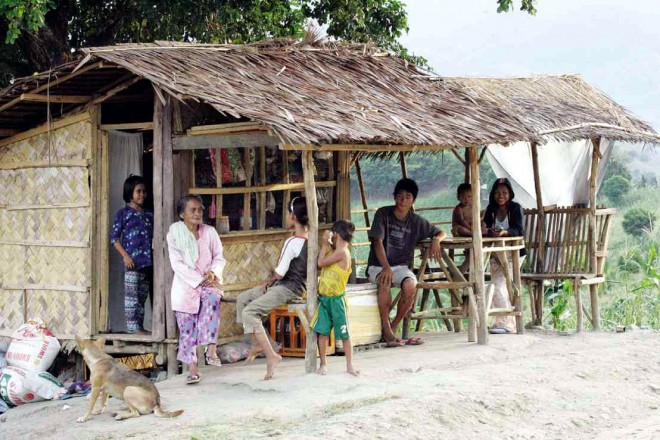Maguindanao farmers return to village

RESIDENTS have returned to the site where 58 people including journalists were slaughtered on Nov 23, 2009 allegedly by followers and members of a political clan in Ampatuan town in Maguindanao province. Thousands of people are expected to troop here later this month to commemorate the 5th year of the massacre. JEOFFREY MAITEM/INQUIRER MINDANAO
AMPATUAN, Maguindanao—Fear-gripped farmers of Sitio Masalay in Barangay (village) Salman here are inching their way back to normal life after being displaced following the massacre of 58 people five years ago.
Parida Pananggulon-Amolan, president of the Salman People’s Organization, said local farmers have received modest assistance from the United Nations-World Food Program (UN-WFP).
The WFP has entered into a memorandum of agreement (MOA) with the Department of Agriculture and Fisheries in the Autonomous Region in Muslim Mindanao (DAF-ARMM) to provide farmers their basic needs to restart a new life with, including high-yielding variety of corn seeds and foldable solar drying sheets or “collapsible drying case.”
Maguindanao Gov. Esmael Mangudadatu, whose wife Jena
lyn was among the 58 people killed here, said he had assured the farmers their areas would be preserved from any expansion by industrial farms, even with local and foreign investors venturing on a banana plantation development in adjacent areas, unless they agreed under lease contract to be part of the banana industrial farming.
DAF-ARMM Secretary Makmod Mending Jr., a former prosecution lawyer in the massacre case, and Michael Argonza, UN-WFP national program, signed the MOA, which also seeks progress monitoring of the farmers’ livelihood adversely affected by the events following the carnage.
Fifty-eight persons, including 32 media workers, were killed here on Nov. 23, 2009. Some members of the Ampatuan family have been detained and are facing trial in connection with the mass murders.
Filly Odap, a Teduray woman, recalled that many indigenous people’s families fled their ancestral villages in Sitio Rizal, near the massacre site.
Elsie Dalayap, president of the Kauran Farmers’ Marketing Cooperative (KFMC), told the Inquirer her group has set aside 55 hectares for high-value crops in partnership with the Department of Environment and Natural Resources (DENR) in the ARMM. She said five horses were also given by her group to lumad families.
Mangudadatu said the lumad families’ concern for community safety has been addressed and would be monitored more often. The two women said Sitio Rizal, an uphill cultural community five kilometers from here, has improved.
DENR-ARMM Secretary Hadji Kahal Kedtag said the partnership would provide support to lumad families under the National Greening Program (NGP), which is complemented by “Balik Kalikasan,” a multisector group.
Farmer Musa Dalamba said tillers, who have moved from their home farms, have survived with growing and selling vegetables. But this time, he said, they could not expect much income from vegetable farming, because of too much heat from the sun.
Argonza said Sitio Masalay farmers are among recipients of the international agency’s collapsible drier cases distributed to 60 farmer-groups in Maguindanao and 60 in Lanao del Sur.
Mending said instead of giving food or cash to farmers, a reform package under the ARMM administration of Mujiv Hataman provides a continuing link between his department and the international food agency to engage farmers for long-term collective benefits to them.
Modern postharvest facility
UN-WFP Country Representative Aomo Asaka Nyangara said the collapsible drying cases are a modern postharvest facility that is usually not available locally, if not costly to farmers.
Adjacent to their small farms is a huge industrial plantation and social complex being developed by a consortium of local investor group Al-Mujahidun Agro-Resources and Development Inc. (Amardi) and the foreign capital groups of Univex and Delinanas.
Most of the areas covered by the corporate plantation form a settlement awarded by the administration of then President Fidel Ramos to a local group of Moro National Liberation Front (MNLF), under Commander Datu Tayan Sangki, after the signing of the 1996 Peace Agreement between the government and the MNLF. Nash B. Maulana, Inquirer Mindanao














